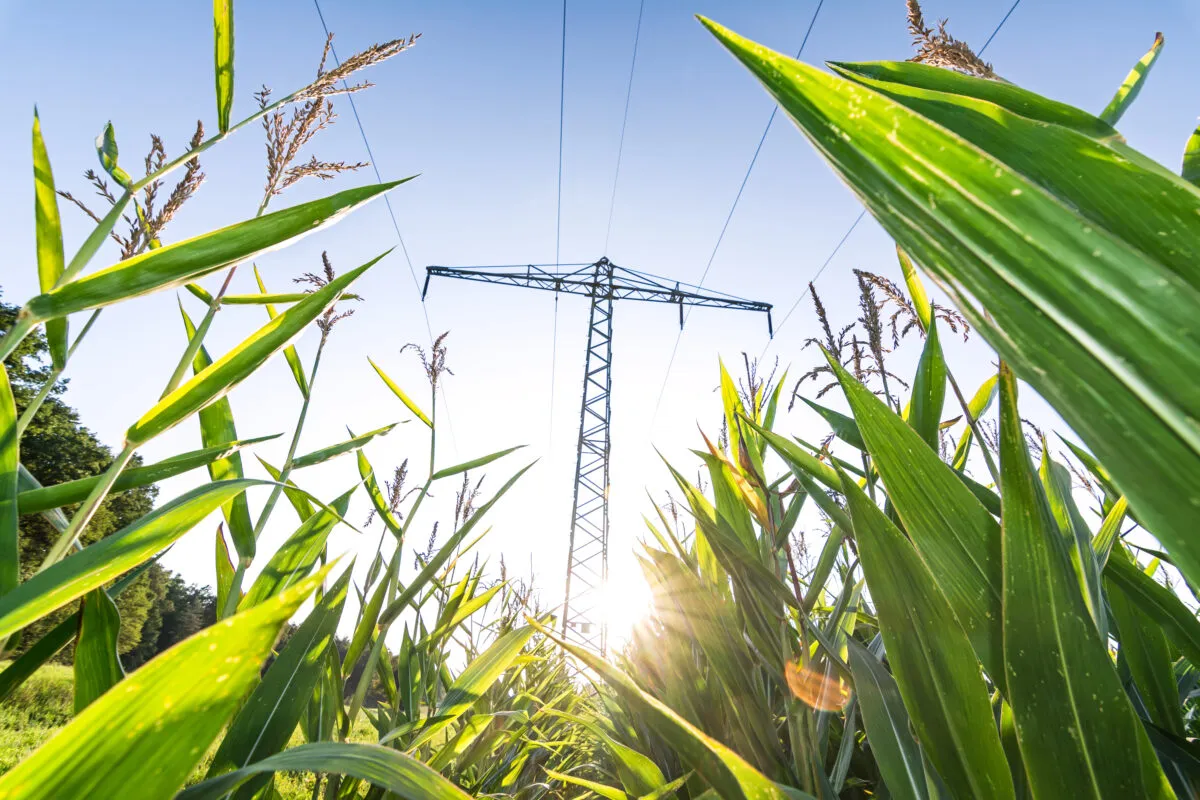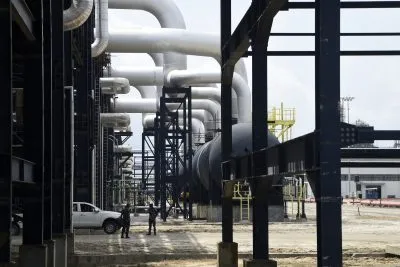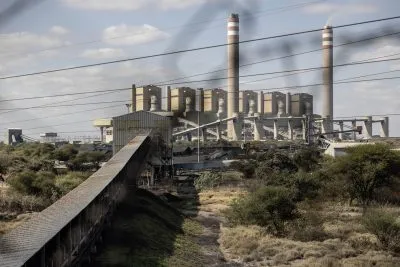Producing energy from bio-based materials, advocates suggest, offers a means for Africa to take a huge leap towards net zero carbon emissions. It will, they say, also boost rural livelihoods and reduce the cost of importing fuel.
Others, however, insist that biofuels are a recipe for disaster – potentially resulting in deforestation, the eviction of rural smallholders and the loss of land that should be used for food production.
Bio-based materials can provide energy in multiple ways. Certain crops can be used to produce ethanol, which can then be blended with gasoline to produce fuel for vehicles. Ethanol can also be used in cooking stoves, providing a cleaner alternative to wood or charcoal. Alternatively, crops – or their waste products – can be burned to generate electricity.
Of course, Africa already relies on biomass for energy. The International Energy Agency estimates that over 80% of the continent’s population uses biomass – mainly firewood and charcoal – for cooking.
But production of biofuels on a commercial scale in Africa has been very limited – the giant commercial biofuel plantations seen in Brazil and parts of Southeast Asia remain uncommon in Africa.
An untapped opportunity?
British entrepreneur Richard Bennett set up Sunbird Bioenergy in 2015, seeing an “untapped opportunity” to use biofuels to help provide Zambia with cheaper fuel. In the absence of domestic oil production, the country has long been forced to import petroleum through Tanzania.
Zambia is, like many African countries, at the mercy of volatile global oil prices and exchange rate fluctuations, with the result, Bennett says, that fuel is “really ridiculously expensive”.
Sunbird Bioenergy is now using cassava as a feedstock for a biorefinery in Luapula province that is designed to produce 120m litres of ethanol a year. The company says that this will be equivalent to 20% of Zambia’s petroleum use and will help the country reduce its import bill by $100m.
But countries like Zambia have a long way to go before they can replicate Brazil, where over 1.5m people are employed directly and indirectly in ethanol production. Brazil’s success in enabling a much greater role for ethanol has depended on its ability to require its car manufacturers to produce “flex fuel vehicles” that can run on fuel with a very high ethanol content.
Petrol sold in Brazil has a standard ethanol content of 27% – and many vehicles can run purely on ethanol. Elsewhere, ethanol can make up no more than 10-15% of gasoline at the pump. In the absence of a domestic car manufacturing industry in most African countries, governments have fewer levers to stimulate the growth of a biofuels industry.
The sky’s the limit?
Another opportunity comes from sustainable aviation fuel (SAF). Yitatek Yitbarek, regional manager for Africa at the Roundtable for Sustainable Biomaterials, says that Ethiopian Airlines is one of many airlines to show interest in Africa’s SAF-producing potential.
“They are looking at opportunities of producing SAF and partnering with potential investors in that sector,” he says.
Production of SAF from biofuels is currently negligible, making up less than 0.1% of aviation fuel used worldwide. A huge ramping-up of production will be needed in the coming years. The EU is currently considering targets for SAF to provide as much as 85% of aviation fuel by 2050.
A 2019 study by the International Institute for Applied Systems Analysis and the South African branch of the World Wildlife Fund found a “meaningful” potential to produce jet fuel using biomaterials in sub-Saharan Africa, particularly in central Africa, Democratic Republic of Congo and the Gulf of Guinea region. It warned, however, that the amount of land available to produce biofuels will substantially decline by 2050, due to the need to grow more food.
Food versus fuel
The apparent conflict between using land to provide fuel or to grow food is perhaps the thorniest issue in the biofuels debate.
Stefan Schmidt, a microbiology professor at the University of KwaZulu-Natal, co-authored a study on the sustainability of biofuel production in Africa last year. He tells African Business that considering the costs and benefits of using productive land to produce energy crops is at the heart of the challenge for Africa.
“Depending on the feedstock and its production,” he says, “adverse environmental effects might emerge.”
Multiple NGOs have fiercely criticised European policymakers for allowing crops to be used as biofuels. T&E, an environmental NGO, describes the EU’s promotion of crop biofuels as “the dumbest thing the EU has done in the name of the climate”. It argues that Europe’s burning of wheat, rapeseed and sunflower oil is a major cause of surging food prices.
“Certainly, food production should have priority over energy crop production in case of food security challenges,” says Schmidt. But, he says, it may be possible to find solutions that allow for crops to be used for energy on land unsuitable for food production – providing the land is properly monitored and managed.
Bennett agrees that biofuel production should take place only on land that is not needed for food. “You’ve got to make sure you’re operating in areas where there is no conflict with food production,” he says.
Sunbird Bioenergy is operating on a 100,000-hectare block of land in Zambia that the government had allocated to commercial production. Bennett says that the land could theoretically be used to grow a food crop such as maize, but doing so would not be commercially viable due to the high cost of transporting the produce to markets in urban areas.
Energy from waste
Producing energy from crop waste offers one way to square this circle.
“Bioenergy can be seen as a way for Africa to reduce not only its dependence on fossil fuel energy but also as a way to address the disposal of organic waste to landfill or dumping,” points out Chris Chijiutomi, head of infrastructure equity for Africa and Pakistan at British International Investment, the UK’s development finance institution.
“Entrepreneurs and corporates alike are working towards developing and implementing small scale as well as larger scale solutions.”
India’s efforts to use crop residues and other forms of organic waste, such as manure, to produce compressed biogas (CBG) could provide a model for Africa to learn from, says Chijiutomi. The country is especially seeking to use rice straw – which is otherwise often burnt in fields, exacerbating air pollution in northern India – to produce CBG.
There are already several waste-to-energy projects in Africa, notably in Egypt and South Africa. South African Breweries in March signed a power purchase agreement with the operator of a biogas facility that plans to use slurry from one of the country’s largest dairy farms to generate electricity.
Schmidt agrees that there is potential for biogas in Africa’s energy mix.
“It is crucial to select the right technology when considering the different regions,” he says. “While for less-developed rural areas lacking infrastructure, simple biogas digesters could work to supply energy locally using available organic waste, more developed regions could qualify for larger systems.”
A greener future?
The potential for Africa to become a major producer of bioenergy is undoubtedly considerable. Bennett believes the continent can become a “green powerhouse”, with bioenergy helping the continent to become energy independent and ultimately an exporter of fuel to other markets.
But those who plan to produce biofuels commercially face major hurdles. As well as its operations in Zambia, Sunbird Bioenergy acquired a bioenergy project in Sierra Leone in 2016 that had originally been established by the Addax and Oryx Group, an entity best known for producing oil.
“It looked like a very good opportunity,” says Bennett – but he acknowledges that multiple headaches with land and infrastructure, and difficult relations with the government, have disrupted the project.
Despite the challenges, Yitbarek describes biofuel as a “low-hanging fruit” for greater use of green technology in Africa. But, he adds, “adopting international experiences of biofuel production to be compatible with the African context is important.”
Indeed, few would argue that Africa should simply seek to replicate the experience that countries like Brazil have had with biofuels. Brazil’s status as a world leader in biofuels relies on a long history of mechanised agriculture on huge plantations. Similar conditions could not be created across most of Africa without evicting millions of rural smallholders or turning rainforests into commercial farms.
Instead, the key for Africa is to find small-scale as well as large-scale solutions for harnessing energy from bio-based materials in ways that prove sustainable over the long-term.
Want to continue reading? Subscribe today.
You've read all your free articles for this month! Subscribe now to enjoy full access to our content.
Digital Monthly
£8.00 / month
Receive full unlimited access to our articles, opinions, podcasts and more.
Digital Yearly
£70.00 / year
Our best value offer - save £26 and gain access to all of our digital content for an entire year!
 Sign in with Google
Sign in with Google 



